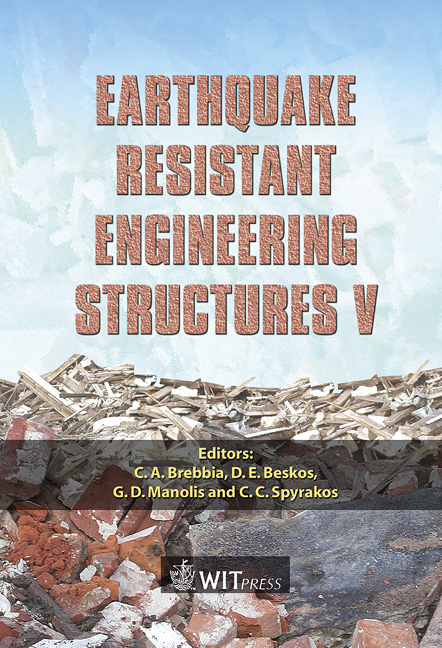Incorporation Of The Soil-structure Interaction Into Performance-based Design
Price
Free (open access)
Transaction
Volume
81
Pages
10
Published
2005
Size
484 kb
Paper DOI
10.2495/ERES050171
Copyright
WIT Press
Author(s)
J. Avilés & L. E. Pérez-Rocha
Abstract
A performance-based design is aimed at controlling the structural damage based on precise estimations of proper response parameters. This is possible if more accurate analyses are carried out, including all potential important factors involved in the structural behaviour, as is the case of soil-structure interaction. This paper presents a simplified procedure for practical damage analysis of structures elastically supported, with potential application to performance-based design. The damage model proposed here is based on maximum displacement and dissipated energy under monotonic loading, with the effects of cyclic behaviour and load reversals being estimated by using a modified Park-Ang index. Analyses are made for a single elastoplastic structure with embedded foundation in a stratum over rigid bedrock. This is done by using an analogy with an equivalent fixed-base oscillator defined by the coupled period and damping of the system and its global ductility. Selected numerical results are presented in terms of dimensionless parameters, the significance of soil-structure interaction in the structural performance is elucidated and the adequacy of the approach presented is examined. Keywords: damage model, equivalent oscillator, performance-based design, soil-structure interaction, strength and damage spectra. 1 Introduction It is widely recognised that the performance-based design requires more accurate analyses, including all potential important factors involved in the structural behaviour. Only in this way we can improve the prediction of the expected level of structural damage associated with a given level of earthquake. One of these
Keywords
damage model, equivalent oscillator, performance-based design, soil-structure interaction, strength and damage spectra.





